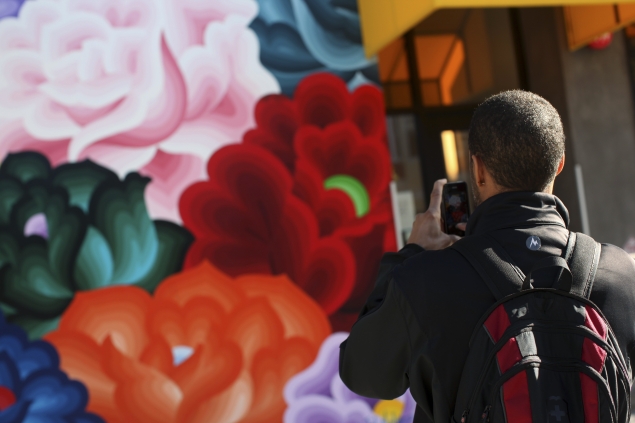- Home
- Mobiles
- Mobiles News
- Chip converts snapshots into perfect pictures
Chip converts snapshots into perfect pictures

Built by the MIT's Microsystems Technology Lab, the chip can instantly create a more realistic or enhanced lighting in a shot without destroying its ambience. The technology could be integrated with any smartphone, tablet computer or digital camera.
Existing computational photography systems tend to be software applications that are installed onto cameras and smartphones, says Rahul Rithe, graduate student in MIT's Department of Electrical Engineering and Computer Science, who led the project.
However, such systems consume substantial power, take a considerable amount of time to run, and require a fair amount of knowledge on the part of the user, according to a MIT statement.
"We wanted to build a single chip that could perform multiple operations, consume significantly less power compared to doing the same job in software, and do it all in real time," Rithe says.
He developed the chip with Anantha Chandrakasan, professor of electrical engineering, graduate student Priyanka Raina, research scientist Nathan Ickes and undergraduate Srikanth Tenneti.
One such task, known as High Dynamic Range (HDR) imaging, is designed to compensate for limitations on the range of brightness that can be recorded by existing digital cameras, to capture pictures that more accurately reflect the way we perceive the same scenes with our own eyes.
Another task the chip can carry out is to enhance the lighting in a darkened scene more realistically than conventional flash photography.
"Typically when taking pictures in a low-light situation, if we don't use flash on the camera we get images that are pretty dark and noisy, and if we do use the flash we get bright images but with harsh lighting, and the ambience created by the natural lighting in the room is lost," Rithe says.
So in this instance the processor takes two images, one with a flash and one without. It then splits both into a base layer, containing just the large-scale features within the shot, and a detailed layer.
Finally, it merges the two images, preserving the natural ambience from the base layer of the non-flash shot, while extracting the details from the picture taken with the flash.
For the latest tech news and reviews, follow Gadgets 360 on X, Facebook, WhatsApp, Threads and Google News. For the latest videos on gadgets and tech, subscribe to our YouTube channel. If you want to know everything about top influencers, follow our in-house Who'sThat360 on Instagram and YouTube.
Related Stories
- Galaxy S24 Series
- MWC 2024
- Apple Vision Pro
- Oneplus 12
- iPhone 14
- Apple iPhone 15
- OnePlus Nord CE 3 Lite 5G
- iPhone 13
- Xiaomi 14 Pro
- Oppo Find N3
- Tecno Spark Go (2023)
- Realme V30
- Best Phones Under 25000
- Samsung Galaxy S24 Series
- Cryptocurrency
- iQoo 12
- Samsung Galaxy S24 Ultra
- Giottus
- Samsung Galaxy Z Flip 5
- Apple 'Scary Fast'
- Housefull 5
- GoPro Hero 12 Black Review
- Invincible Season 2
- JioGlass
- HD Ready TV
- Laptop Under 50000
- Smartwatch Under 10000
- Latest Mobile Phones
- Compare Phones
- Vivo V30e
- Itel Super Guru 4G
- Huawei Pura 70 Pro+
- Huawei Pura 70 Ultra
- Tecno Camon 30 Premier 5G
- Motorola Edge 50 Fusion
- Oppo A1i
- Oppo A1s
- Asus ZenBook Duo 2024 (UX8406)
- Dell Inspiron 14 Plus
- Realme Pad 2 Wi-Fi
- Redmi Pad Pro
- Cult Shock X
- Fire-Boltt Oracle
- Samsung Samsung Neo QLED 8K Smart TV QN800D
- Samsung Neo QLED 4K Smart TV (QN90D)
- Sony PlayStation 5 Slim Digital Edition
- Sony PlayStation 5 Slim
- Voltas 1 Ton 5 Star Inverter Split AC (125V Vectra Elite)
- Voltas 1.5 Ton 3 Star, Inverter Split AC (183V Vertis Emerald 4503563)
















